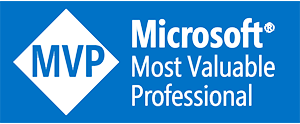Database Delivery Best Practices Pluralsight course
My new course Database Delivery Best Practices for Pluralsight went live. Database Delivery Best Practices Database delivery is still something many programmers struggle with. It’s not always clear how to deal with the database schema differences in different environments, how to resolve merge conflicts that inevitably arise when more than one programmer works with the DB, how to make sure you don’t break the other teams' applications when you refactor the database structure and so on.
Unit tests value proposition
The topic described in this article is part of my Unit Testing Pluralsight course. I’m starting a new series which will be devoted to the topic of unit testing. In it, I’ll try to define what a valuable test is and show how the use of mocks fits into this picture. I’ll also describe the approach that I think has the best return of investments in terms of the value it provides.
7 notable NDC London 2016 talks
This post is a review of some talks from NDC London 2016 that I found interesting.
Immutable architecture
The topic of immutable architecture described here is part of my Applying Functional Principles in C# Pluralsight course. In this post, I’d like to show a common approach to introducing immutability to your code base on an architectural level. Immutability, State, and Side Effects Before we start, let’s take a minute to define the terms. Most likely, you have already encountered them but I want to make sure we are on the same page here.
Singleton vs Dependency Injection
This post is a showcase for the Singleton design pattern. In contrast to the common belief, Singleton is not inherently bad and I’ll try to show you in what circumstances it is a good choice.
Defensive programming: the good, the bad and the ugly
In this post, I want to take a closer look at the practice of defensive programming.
What is functional programming?
The topic of functional programming described here is a part of my Applying Functional Principles in C# Pluralsight course. In this article, I’ll try to answer the question: what is functional programming? Functional programming So, what is functional programming? This term arises quite often and every author writing about it gives their own explanation. I’m no exception. In my opinion, the simplest and at the same time precise definition is the following: functional programming is programming with mathematical functions.
Applying Functional Principles in C# Pluralsight course
My new course Applying Functional Principles in C# for Pluralsight went live. Applying Functional Principles in C# What interesting about functional programming is that it allows you to adhere to the most important software development principles, just as the DDD practices do. It helps reduce the cognitive load when you deal with your code base and thus keep your software maintainable in a long term. This course is based on the article series I posted awhile back.
Having the domain model separated from the persistence model
In this post, I’d like to write about a pretty common discussion in DDD circles: should one have the domain model separated from the persistence model? In other words, should you map your domain objects to the DB tables directly using an ORM or would it be better to use a separate set of Data Access Objects (DAOs) instead?
Trying to impress people with your code
In this post, I’d like to write about the personal traits we all possess. Namely, I want to talk about being proud of your code and trying to impress people with it.



